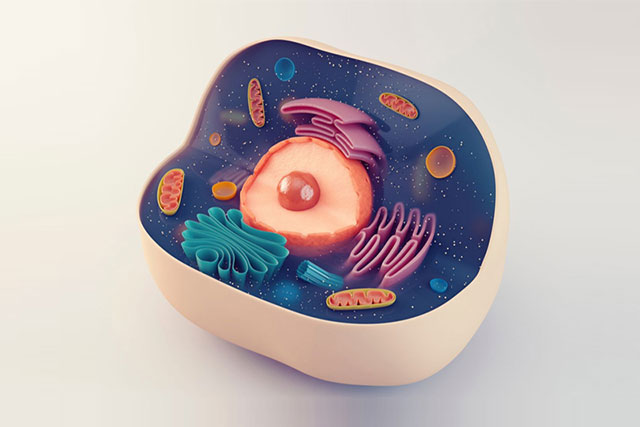Mechanisms of action of antibiotics
12 Dec 2016
Biologist Dr. Doping tells about the mechanism of action of ribosomes, the protein biosynthetic apparatus and resistant strains of bacteria to antibiotics.

Antibiotics is a small molecule natural, semisynthetic or synthetic origin, which inhibit the growth of bacteria. Mass production and use of antibiotics began during World War II, in 1943. Most of the known antibiotics produced by bacteria or fungi, which themselves are resistant to the antibiotic itself and provide a competitive advantage against other bacteria. The discovery of antibiotics revolutionized medicine and provide humanity with several decades of relatively safe existence.
Mechanisms of action of antibiotics
Certain types of antibiotics act as inhibitors of protein synthesis apparatus and the central part - the ribosome. The ribosome - a kind of factory, a large molecular machine weighing more than 2.5 megadalton and a diameter of about 200 angstroms, which are going to proteins in the cells of all living organisms. Ribosomes are studying with the 1950s, but today, this field of research is experiencing a rebirth. Interest in the study of protein prokaryotic (bacterial) cells biosynthesis apparatus due to the fact that it was bacterial ribosomes are targets for many types of antibiotics used in therapy.
Antibiotics bind to the ribosome and inhibit, i.e. slow or prevent the individual reactions which are catalyzed by the ribosome. They can compete with the binding site of the natural ligand or block a specific conformation of the ribosome. The individual structural elements of the ribosome have conformational mobility that allows it to interact with native substrates and to provide the complex process of protein biosynthesis. But some antibiotics may inhibit certain reactions. Due to this, protein synthesis stops or starts to happen correctly. As a result, abnormal proteins produced, and this leads to bacterial cell death.
Scientists were able to make much progress in the study of protein biosynthesis, precisely because at the moment a large number of known inhibitors. By inhibiting the individual reactions may be obtained new information about the molecular mechanism of action of ribosomes. On the other hand, can determine the molecular mechanism of inhibition. For some antibiotics, for example, proposed a molecular mechanism that was investigated in vitro. This mechanism has provided an inhibitory effect at concentrations several orders of magnitude higher than actual use in therapy. The experiments have discovered another reaction, and which inhibits the antibiotic at low concentrations. If we have multiple steps, it is clear that one of their antibiotic effect. But since all the reaction difficult to verify, it is difficult to find exactly where the antibiotic exerts its destructive effect. Check all reactions requires considerable time and resources to research. There are several levels at which you can investigate the action of antibiotics. The most simple - grow bacterial cells, they add an antibiotic and see how the cells died. But this approach remains unknown how it happened. Vitamin B12 Cyanocobalamin injection - is very essential for DNA making.
Biosynthesis apparatus of Protein
There are a number of approaches that divide the processes that have been affected in the cell. Typically, processes related to DNA replication, transcription or translation. If it turns out that it is the processes associated with the broadcast, you can use the arsenal of techniques that have been developed - methods in vitro, when we use purified components of the protein-synthesizing system, ie, the ribosome, transfer RNA, protein elongation factor. In this case, the system adds only known components, and we know exactly what is going on in such a system. And then we can add inhibitor and analyze the reaction it touches.
The range of methods is quite wide. The recent boom in the field of protein biosynthesis studies occurred in the 2000s, when the first full three-dimensional structures of ribosomes, which were obtained by X-ray crystallography. During these studies in 2009 he was awarded the Nobel Prize in Chemistry. At this point, the researchers were divided into two camps. One group believed that outstanding issues remained, and you can minimize your research and start doing something else. And another group of scientists believe that everything is just beginning, because it is unclear molecular mechanism. Before receiving spatial structures functional studies resembled study of the black box. We took ribosome added thereto substrates, messenger RNA (media), transfer RNA, and the obtained polypeptide is output. What happened in the middle of this process - is unclear. With the advent of structural information the first time scientists were able to make experiments more directly. Now we know where a protein is located, where any nucleotide. So, we can assume how the one or the other functional center, make-directed mutagenesis and check how it will affect certain reactions.
Immediately after the occurrence of the first spatial structures were structures in which the ribosome was in combination with antibiotics. Then I was born the first understanding of where this antibiotic associated, in which the center, he can influence. Then these biochemical, biophysical studies have found a new life. Structural methods that have been developed have had a tremendous impact on the study of the ribosome. Later, there were methods cryoelectron microscopy, which now also allows to obtain the spatial structure of large macromolecular complexes with very high resolution - about 2.5-3 angstroms. Methods cryoelectron microscopy gradually replacing crystallography, a number of parameters they it has surpassed. Now we can assemble functional complex, to see where in the associated antibiotic, and make assumptions about its molecular mechanism of action. It is important that now obtain structural information takes days and weeks, not years, as it was before. This, of course, enormous scientific and technological progress.
Bacterial resistance to antibiotics
According to a 2014 World Health Organization report, about 23 000 deaths in the United States (and about 25,000 in the EU) each year are associated with infections caused by bacterial strains that are resistant to antibiotics. Infections cause significant economic damage (direct and indirect), billions of dollars.
The first antibiotics were used in the clinic in the 40-ies of the last century. Later, there were new classes of antibiotics, and a few years later were found bacterial strains resistant to the antibiotic.
This stability has a number of reasons. First, the bacteria are able to mutate. Mutations occur in the ribosomal RNA or protein some factor and change the properties of the ligand. Thus inhibitor that is an antibiotic that binds to the same or a nearby place, simply ceases to provide such a significant effect. After this mutant strain gets a competitive advantage and begins to multiply.
Bacteria as evolutionarily ancient organisms have learned to adapt to difficult environmental conditions. They have effective methods of developing resistance to antimicrobial agents, antibiotics, so as soon as there is an antibiotic in the treatment, after some time, we must expect that there will be a steady strain and the antibiotics cease to operate.
Since the widespread use of tetracycline and before the first reliably resistant strains it was about 9 years old. And for methicillin from the beginning of the application to the detection of resistant strains it has been only 2 years. In recent history, some antibiotics documented the emergence of resistant strains of the following year after the beginning of their application. The final point in the struggle to put virtually impossible. The only thing that can be done - to pay serious attention to the development of new classes of antibiotics to constantly replenish the arsenal and develop new drugs.
The development of new antibiotics
Most antibiotics that are currently used in the therapy - is either natural substances or derivatives of certain natural substances. And only a few antibiotics - a fully synthetic, invented by chemists substance.
There are several approaches to the development of new antibiotics. Basically they are trying to find new inhibitors by screening of those substances which microorganisms produce - either bacteria or fungi. Since the likelihood that such substances are synthesized is large, it is possible to sort just those substances which are released by bacteria or fungi. Most of the known antibiotics today detected in this way. An alternative method - a rational design, ie the use of data on the structure of the ribosome, the structure of the active site and attempt to come up with a molecule that interacts with a specific functional center and inhibit the reaction. Moreover, both approaches can be combined.

 Cart
Cart





